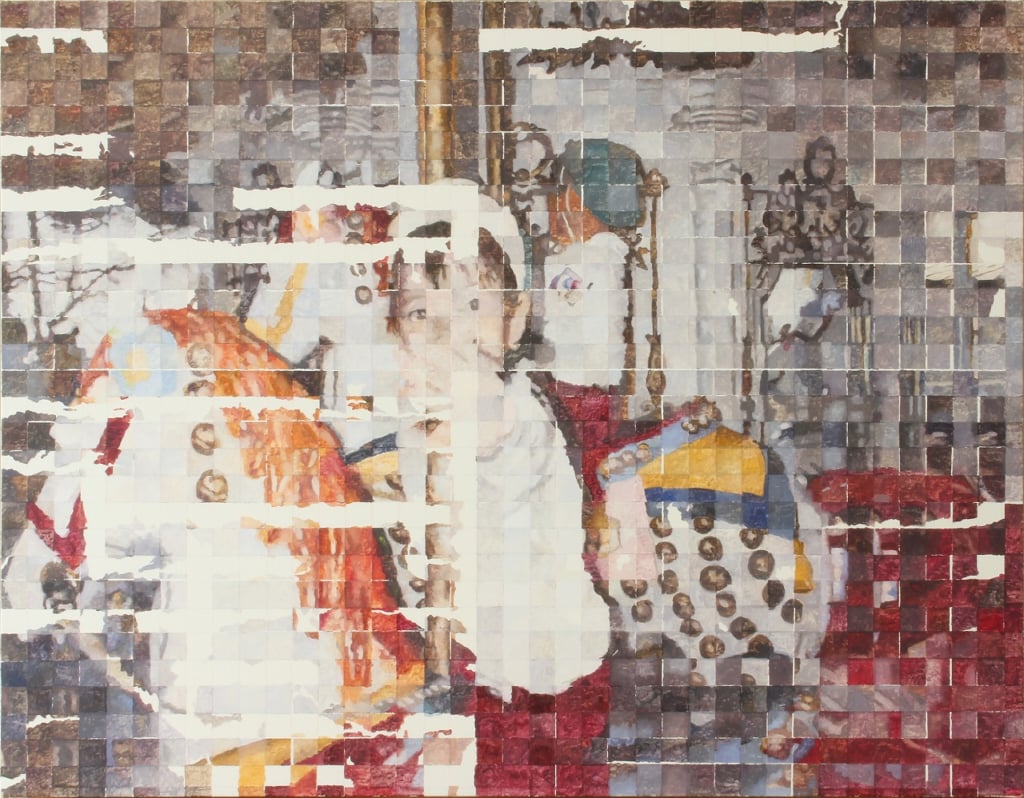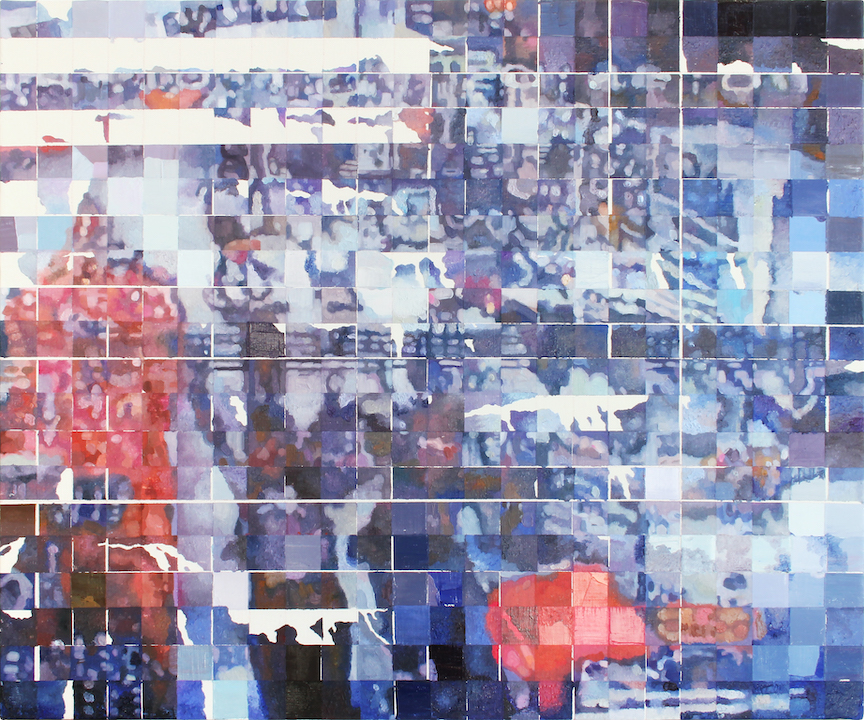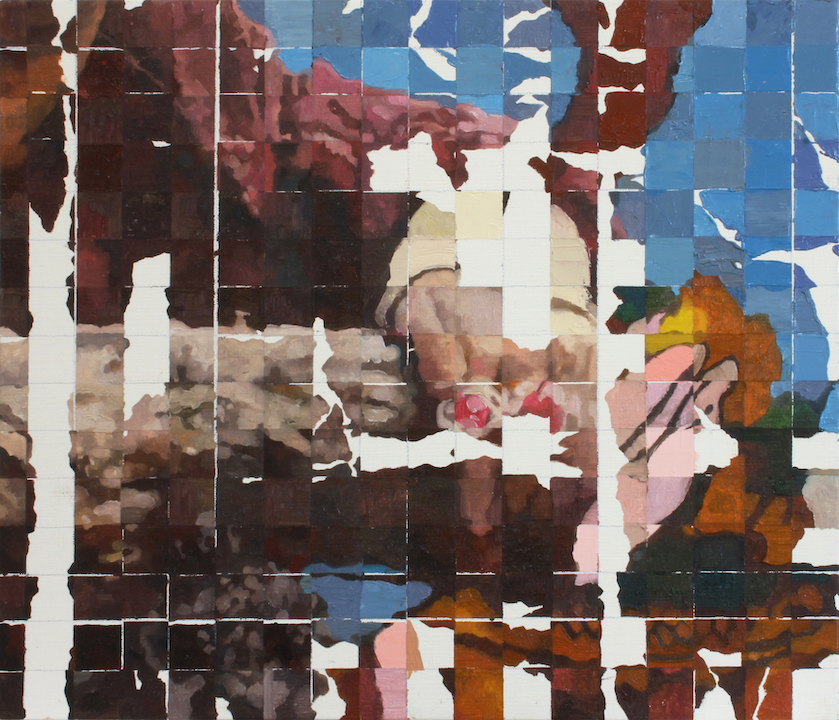Shiori Tono and Pixellated Memory
With her canvases, the Japanese artist questions our relationship with images, their digitalisation and the memories associated with them.

Shiori Tono, 'Friday', 2018 © Maki Gallery
Fragments of memory, centimetre by centimetre. Somewhere between Seurat’s pointillism and Invader’s mosaics, Shiori Tono draws a grid over printed photographs as if to retrieve a partially lost memory, before transferring the image onto canvas, square by square.
Lost images
The artist, born in Oita Prefecture in 1994 and the recipient of the Wasaku Kobayashi Encouragement Prize in 2018, always goes through the same process: on a photograph, she makes 3 x 3-cm squares using masking tape. She then uses paint to reproduce these squares on a canvas, one after the other—the adjacent square is therefore hidden when the paint is applied. Thus, the masking tape is stuck and removed several times, causing the image to deteriorate gradually, in an allegory of the loss of memory that is already fragmented. The artist’s inspirations include photographs found in family archives or that she took herself, like one of an unusual house spotted while on a walk, the edges of which fade into the surrounding vegetation.
In a society overloaded with digital images, these are neglected and get lost in the crowd, while others are compressed and pixellated in order to be stored. ‘Shiori Tono captures these unstable, uncertain “memories” objectively, calmly observing their incompleteness and non-sequentiality as she turns them into artworks’, summarises the text accompanying an exhibition of her work at the Maki Gallery in Tokyo.
Shiori Tono’s work can be viewed on her website.

Shiori Tono, “Hide and Seek”, 2019 © Maki Gallery

Shiori Tono, '20:42:09', 2019 © Maki Gallery

Shiori Tono, 'Matataki', 2019 © Maki Gallery

Shiori Tono's working process
TRENDING
-
The Tradition of the Black Eggs of Mount Hakone
In the volcanic valley of Owakudani, curious looking black eggs with beneficial properties are cooked in the sulphurous waters.

-
Gashadokuro, the Legend of the Starving Skeleton
This mythical creature, with a thirst for blood and revenge, has been a fearsome presence in Japanese popular culture for centuries.

-
The Tattoos that Marked the Criminals of the Edo Period
Traditional tattoos were strong signifiers; murderers had head tattoos, while theft might result in an arm tattoo.

-
‘YUGEN’ at Art Fair Tokyo: Illumination through Obscurity
In this exhibition curated by Tara Londi, eight international artists gave their rendition of the fundamental Japanese aesthetic concept.

-
An Encounter with the Last Shamans in Japan
Sociologist Muriel Jolivet's book offers an analysis combined with a travelogue and interviews with these women with supernatural powers.





